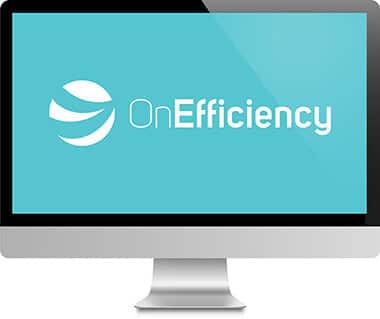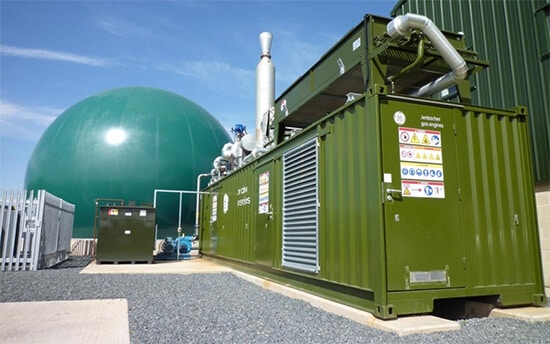Heat Pumps

What are Heat Pumps?
A heat pump is a ‘refrigeration machine’ that transfers heat from a lower temperature heat source, e.g. groundwater or air, to a higher temperature heat sink, e.g. for underfloor heating.
With performance ratios higher than conventional fossil fuel heating systems, heat pumps have become popular as a replacement or alternative heat generation system to de-carbonise heating in buildings. Compared to a conventional boiler, the amount of heat energy generated can be greater than the energy needed to drive the system.
Heat pumps possess the same core functional parts (a compressor and an evaporator) and the heat pump technology is typically described and differentiated by the heat source, which are: ground source, air source and water source.
With performance ratios higher than conventional fossil fuel heating systems, heat pumps have become popular as a replacement or alternative heat generation system to de-carbonise heating in buildings. Compared to a conventional boiler, the amount of heat energy generated can be greater than the energy needed to drive the system.
Heat pumps possess the same core functional parts (a compressor and an evaporator) and the heat pump technology is typically described and differentiated by the heat source, which are: ground source, air source and water source.
How do Heat Pumps work?
Energy in the form of heat is transferred from one environment to another by circulating a substance called refrigerant through a cycle of evaporation and condensation.
A compressor pumps a refrigerant between two heat exchanger coils. In one coil, the refrigerant is evaporated at low pressure and absorbs heat from its surroundings. The refrigerant is then compressed on route to the other coil, where it condenses at high pressure. At this point, it releases the heat it absorbed earlier in the cycle.
All heat pumps require electricity to drive the system, however they are designed to produce more heat than the electricity they use. The ratio of heat produced versus electricity used is known as the Coefficient of Performance (CoP) and this is affected by the temperature lift required, i.e. the temperature difference between the heat source (e.g. radiator) and what’s required for the heat sink (e.g. internal comfort temperature).
In general, the efficiency of a heat pump will always be greater than 100%, compared to say a natural gas boiler heating system with an efficiency of between 70% and 95%. When it comes to heat pumps, whether the energy is derived from water, air or the ground, the efficiency only considers the energy it takes to extract the heat.
You will see three terms that are commonly quoted to describe the efficiency of a heat pump – Coefficient of Performance (CoP), SCoP (Seasonal Coefficient of Performance), and SPF (Seasonal Performance Factor).
Here is a good rule of thumb to help you distinguish: CoP is an instantaneous measure of a heat pump’s efficiency and is a measure of power (kW). Whereas the SCoP and SPF are a measure of the heat pumps efficiency over a given time period – usually a full year.
They are a measure of energy (kWh). Like the CoP, the SCoP is derived from theoretical simulations and may not be specific to the efficiency of the heat pump in the same climate location and heat demand profile as your building.
The SPF is an actual measurement of the heat pump’s efficiency in a specific installation, derived from meter readings. A CoP is typically the highest value relating a system’s efficiency because manufacturers often like to quote this efficiency at times of peak performance; the SCoP is typically lower because it includes simulated times of the year when the heat pump’s performance drops (e.g. due to cold weather when the source is colder, and the heat demand is higher or longer).
If a heat pump is designed using annual parameters for your building and its location, then a SCoP is often referred to as a ‘design SPF’. Whereas the SPF is a real-world, in-situ measured value calculated from a year’s worth of generation and consumption data and can vary due to lots of factors. In practice, the SPF will be affected by variables such as:
- Temperature lift required, based up on the building’s set point temperature, the duration of occupancy and heat energy retaining performance of the walls, windows, roof and floor (fabric efficiency)
- Maximum temperature inside the system (for a conventional system this is >60oC)
- Size and type of heat emitters – radiators and underfloor loops if domestic hot water is required.
For a heat pump to be classified as a renewable heat generation technology, it must have a CoP of at least 2.9 and must have a ‘design SPF’ of at least 2.5. In a system of this design, the heat pump will require 1kW of electricity to produce 2.5kW of useful heat.
In reality, if a building is not optimised to take a heat pump then the SPF could be as low as 1, meaning that for every 1kW of electricity consumed the heat pump will produce 1kW of useful heat. In this situation the heat pump is operating similar to a direct electric heating system.
Heat pumps are described a low carbon heating system, and their cost efficiency is related to the SPF. If electricity tariff is four times more expensive than a natural gas tariff then the heat pump, which is powered by electricity, needs to maintain a performance efficiency greater than the cost difference between electricity and gas tariffs.
A compressor pumps a refrigerant between two heat exchanger coils. In one coil, the refrigerant is evaporated at low pressure and absorbs heat from its surroundings. The refrigerant is then compressed on route to the other coil, where it condenses at high pressure. At this point, it releases the heat it absorbed earlier in the cycle.
All heat pumps require electricity to drive the system, however they are designed to produce more heat than the electricity they use. The ratio of heat produced versus electricity used is known as the Coefficient of Performance (CoP) and this is affected by the temperature lift required, i.e. the temperature difference between the heat source (e.g. radiator) and what’s required for the heat sink (e.g. internal comfort temperature).
In general, the efficiency of a heat pump will always be greater than 100%, compared to say a natural gas boiler heating system with an efficiency of between 70% and 95%. When it comes to heat pumps, whether the energy is derived from water, air or the ground, the efficiency only considers the energy it takes to extract the heat.
You will see three terms that are commonly quoted to describe the efficiency of a heat pump – Coefficient of Performance (CoP), SCoP (Seasonal Coefficient of Performance), and SPF (Seasonal Performance Factor).
Here is a good rule of thumb to help you distinguish: CoP is an instantaneous measure of a heat pump’s efficiency and is a measure of power (kW). Whereas the SCoP and SPF are a measure of the heat pumps efficiency over a given time period – usually a full year.
They are a measure of energy (kWh). Like the CoP, the SCoP is derived from theoretical simulations and may not be specific to the efficiency of the heat pump in the same climate location and heat demand profile as your building.
The SPF is an actual measurement of the heat pump’s efficiency in a specific installation, derived from meter readings. A CoP is typically the highest value relating a system’s efficiency because manufacturers often like to quote this efficiency at times of peak performance; the SCoP is typically lower because it includes simulated times of the year when the heat pump’s performance drops (e.g. due to cold weather when the source is colder, and the heat demand is higher or longer).
If a heat pump is designed using annual parameters for your building and its location, then a SCoP is often referred to as a ‘design SPF’. Whereas the SPF is a real-world, in-situ measured value calculated from a year’s worth of generation and consumption data and can vary due to lots of factors. In practice, the SPF will be affected by variables such as:
- Temperature lift required, based up on the building’s set point temperature, the duration of occupancy and heat energy retaining performance of the walls, windows, roof and floor (fabric efficiency)
- Maximum temperature inside the system (for a conventional system this is >60oC)
- Size and type of heat emitters – radiators and underfloor loops if domestic hot water is required.
For a heat pump to be classified as a renewable heat generation technology, it must have a CoP of at least 2.9 and must have a ‘design SPF’ of at least 2.5. In a system of this design, the heat pump will require 1kW of electricity to produce 2.5kW of useful heat.
In reality, if a building is not optimised to take a heat pump then the SPF could be as low as 1, meaning that for every 1kW of electricity consumed the heat pump will produce 1kW of useful heat. In this situation the heat pump is operating similar to a direct electric heating system.
Heat pumps are described a low carbon heating system, and their cost efficiency is related to the SPF. If electricity tariff is four times more expensive than a natural gas tariff then the heat pump, which is powered by electricity, needs to maintain a performance efficiency greater than the cost difference between electricity and gas tariffs.
How are Heat Pumps applied to a building?
Application of this technology depends on the type of heat pump. However, correct sizing of the system is very important, not least because the cost of the heat pump is closely related to capacity. An oversized heat pump may not perform as well and can have a shorter life than one that is optimally sized.
Therefore, when considering the retrofit of a heat pump, the design/size of the existing radiators (emitters) should be considered. Standard radiators are designed for much higher water temperatures than say underfloor heating and therefore the heat pump could be too small to provide the desired level of heat. If the total heat demand cannot feasibly be provided by the heat pump, an auxiliary heat source can be used, e.g. in retrofit projects this could be an existing boiler.
Building and plumbing upgrades should always be undertaken and completed before designing and installing a heat pump. Heat pumps, as with all heating systems, are designed to meet a specific level of thermal comfort which is derived from the building’s fabric efficiency. If a heat pump is installed before the fabric efficiency of a building is improved (e.g a thermal insulation upgrade or an external wall insulation is added) the heat pump will be oversized. This can lead to drops in SPF, reduction in the service life of the heat pump’s parts and increased energy bills.
Therefore, when considering the retrofit of a heat pump, the design/size of the existing radiators (emitters) should be considered. Standard radiators are designed for much higher water temperatures than say underfloor heating and therefore the heat pump could be too small to provide the desired level of heat. If the total heat demand cannot feasibly be provided by the heat pump, an auxiliary heat source can be used, e.g. in retrofit projects this could be an existing boiler.
Building and plumbing upgrades should always be undertaken and completed before designing and installing a heat pump. Heat pumps, as with all heating systems, are designed to meet a specific level of thermal comfort which is derived from the building’s fabric efficiency. If a heat pump is installed before the fabric efficiency of a building is improved (e.g a thermal insulation upgrade or an external wall insulation is added) the heat pump will be oversized. This can lead to drops in SPF, reduction in the service life of the heat pump’s parts and increased energy bills.
The three-step process to net zero energy
OnGen offers a three-step process through OnGen Expert, OnEfficiency & OnSupply. Steps can be done holistically or separately.

Step 1:
Reduce energy consumption:
With OnEfficiency, we can help you identify where and what you can do to reduce energy consumption and improve energy efficiency.
By becoming more energy efficient, carbon emissions for your organisation will begin to reduce, along with the cost of energy.
By becoming more energy efficient, carbon emissions for your organisation will begin to reduce, along with the cost of energy.

Step 2:
Consider onsite renewable energy and battery storage:
With the OnGen Expert, we can help you explore the feasibility of generating and storing your own energy via a range of onsite renewable energy generation sources, like solar PV and heat pumps.
Switching to generating renewable energy onsite reduces the demand for grid-supplied energy, lowering the cost of energy bills, gaining resilience to grid fluctuations and reducing carbon emissions.
Switching to generating renewable energy onsite reduces the demand for grid-supplied energy, lowering the cost of energy bills, gaining resilience to grid fluctuations and reducing carbon emissions.

Step 3:
Switch to zero-carbon energy suppliers:
With OnSupply, we can help you find the cheapest green energy tariffs for any grid-supplied gas and electricity demand.
Eliminate the remaining energy-related carbon emissions for your organisation.
Eliminate the remaining energy-related carbon emissions for your organisation.
Your organisation will be assigned a dedicated account manager, who will offer training support and guidance. Additionally, if your organisation is struggling for time, the Managed Service, where assessments are conducted by the OnGen team on your behalf, can be a great option.

Talk to one of our team
Book a 20-minute conversation to discuss how we can help you by providing the right information, to make the right decisions.


Download our free Renewable Energy Guide
Case Study
“By assessing solar capability using the OnGen Expert software, we have been able to identify 4,000 tonnes of potential carbon savings in our city-centre building stock. OnGen has made it simple and easy for us to demonstrate potential energy costs savings of £2.9 million across the lifetime of potential onsite renewable installations. The OnGen Expert software has shown us the potential of onsite generation at a fraction of the cost of traditional assessments/consultants.”
NEYH
Book a conversation with OnGen today
Interested in finding out more information? Set up a meeting with a member of our team to discuss how we can help you.









